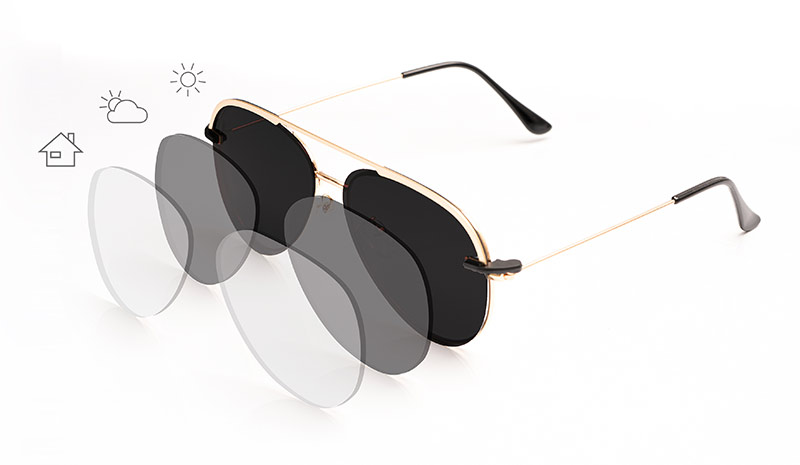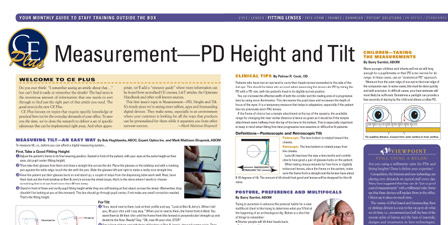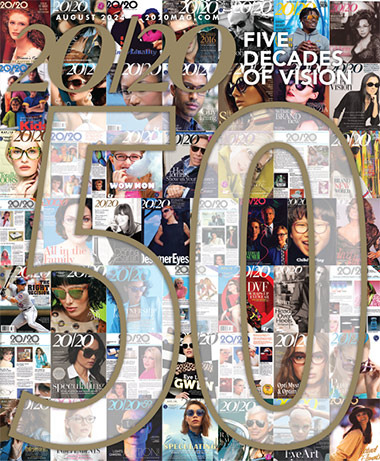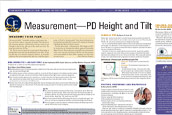Sponsored by IOT
By Deborah Kotob, ABOM

Could sunglasses help delay presbyopia? Aristotle proffered one of the first theories about presbyopia. From his work, we also get the term itself, originally presbyopes, formed from the prefix “presbys,” meaning “old man” in ancient Greek, and the suffix “ops,” which means “eye.” In De Generatione Animalium (On the Generation of Animals), Aristotle stated, “… a reason why old men have not keen sight, the skin of the eye like the rest of the skin wrinkling and becoming thicker in old age.”
Aristotle’s reference to “the skin of the eye” is an interesting choice of words since the eye’s lens is formed from the surface ectoderm during emmetropization (normal eye development). The ectoderm is the outermost layer involved in the formation of various structures such as skin. Second, sun exposure causes photoaging and damage to our skin and eyes, including our lens and retina.
High energy light from the sun is known to damage human tissue. Ultraviolet light is classified as a known carcinogen. Exposure to UV light kills biological cells. This is why UV light is used for sterilization. Under controlled conditions, it can quickly and effectively kill microorganisms. In human skin and eyes, cellular damage is less likely to happen all at once and more likely to happen over time. As a result, problems related to exposure to solar radiation often masquerade as aging.
According to Taylor CR, Stern RS, Leyden JJ, Gilchrest BA in their “Photoaging/photodamage and Photoprotection” article, it is estimated that 90 percent of skin aging is damage caused by sun exposure. The link between solar radiation and cataracts is well established. We are beginning to learn about the association between sun exposure and Age-Related Macular Degeneration (ARMD). Now, scientists are beginning to theorize there may also be a connection between sunlight and presbyopia.
The onset of presbyopia tends to occur earlier among people who live closer to the equator. For example, the age of presbyopia onset in India (10 to 30 degrees latitude) is 37 years. In England (51 to 54 degrees), it is 43 years. This is speculated to be due to higher exposure to UV light and higher ambient temperatures. Our crystalline lens absorbs both solar UV and infrared (heat) radiation.
Researchers in Australia are now asking if presbyopia may be the first stage of cataracts. They note that progressive hardening of the center of the lens may be the reason for both conditions. In both cases, developing a chemical barrier with age stops antioxidants from reaching cells. Antioxidants facilitate the body’s natural ability to repair cells.
Research into the link between presbyopia and cataracts is leading to investigation of non-surgical treatments to treat cataracts, which are also expected to have beneficial effects relative to presbyopia. Several companies are investigating the use of pharmaceuticals, eye drops or injections, to treat both cataracts and presbyopia simultaneously.
It may be a while before an eye drop cures presbyopia but good sun protection for the eyes is available right now.
Optical retailers report increased sunglass sales in the summer months, but the sun shines 360 days of the year, making sun protection a year-round need. Sunglasses protect the eye from potentially harmful rays while reducing brightness and glare to increase visual comfort. It is a win for the patient and the practice when sun and glare protection is part of every eye examination discussion. As opticians, we know that a good percentage of patients resist having more than one pair to manage throughout the day, and that is where the convenience of Neochromes photo-reactive lenses makes it an easy decision for the patient, when their glasses automatically adapt to the light conditions, providing sunglass level protection for their eyes when they step outdoors. Neochromes lenses are crystal clear indoors, darken in seconds and fade from dark to clear in less than 3 minutes. They block 100 percent ultraviolet light and filter HEV light in the 400 to 420 nm range by 60 percent when deactivated and by 92 percent fully activated. Neochromes is also available in Neochromes Dark, which gets darker and but still fades back fast making it ideal for the light sensitive patient who prefers a super dark sun lens. In Neochromes lenses, special attention is paid to visible light transmission (VLT) performance in hot temperatures. At high temperatures (33 degrees Celsius / 91 degrees Fahrenheit), they reach 17 percent VLT, a level of darkness similar to many polarized lenses. At this temperature, the fade back time is around 32 seconds.
When you encourage your patients to invest in sun and glare protection for their eyes, you may also be helping them protect their vision in ways we are just beginning to understand.
Sources provided upon request.












